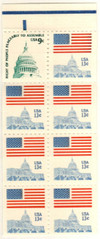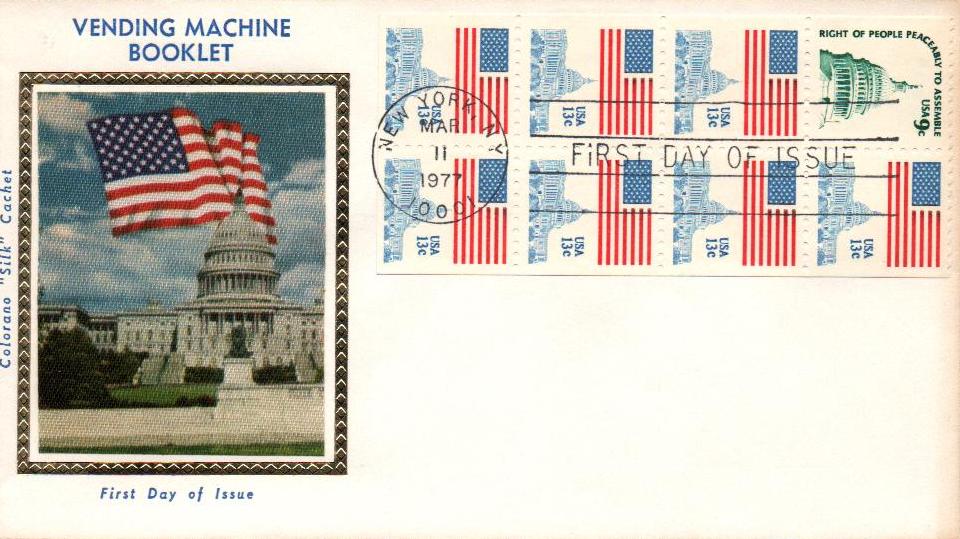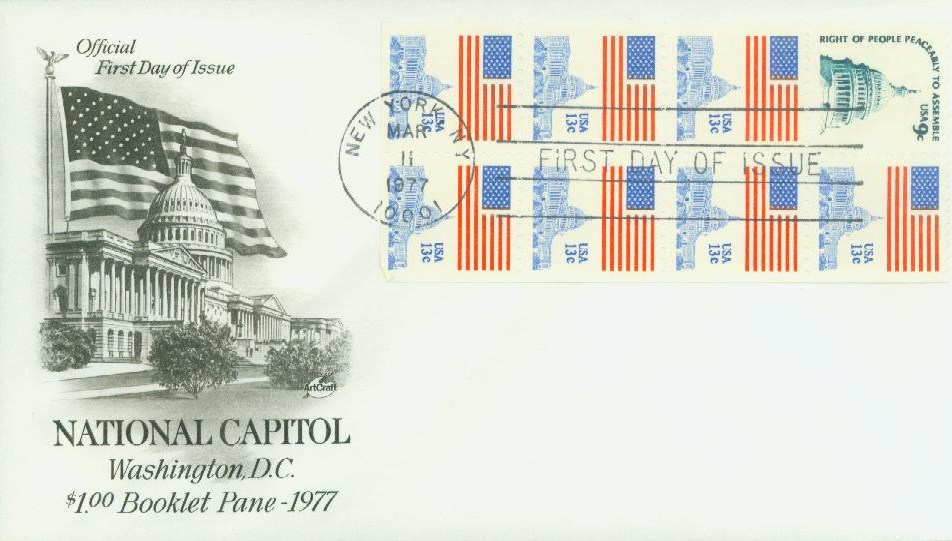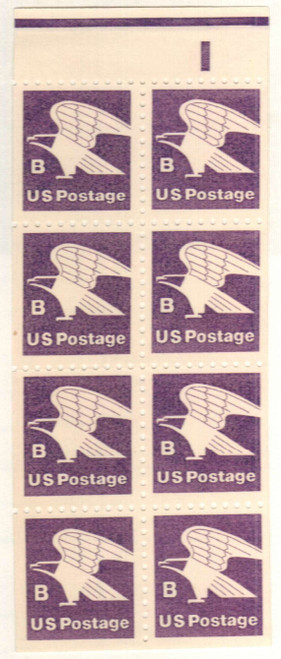
# 1623Bc - 1977 Bklt. pane 8 (1-1590A + 7-1623B)
U.S. #1623Bc is the scarcer version of the 1977 booklet #1623a. It’s perf. 10x93/4 – the normal version is perf. 11x101/2. U.S. #1623Bc and #1623a include seven #1623B stamps plus one #1590A stamp.
First Se-Tenant Booklet Stamps
The booklet was issued at the INTERPEX stamp show in New York City. It was the 19th annual exhibition and it marked the first time in several years that the US and UN issued stamps at the show.
The se-tenant booklet was one of the most significant issues. The booklet was produced especially for vending machines that couldn’t accept more than $1. The $1 booklet contained seven 13¢ stamps and one 9¢ stamp. At the time, 9¢ was the postcard rate and 13¢ was the first-class letter rate. The 9¢ stamp design was the same as US #1591, except while the earlier issue was printed on grayish paper, the new one was on white paper. The 13¢ stamp was a new design and was also the first multicolor stamp issued in booklet form.
U.S. #1623Bc is the scarcer version of the 1977 booklet #1623a. It’s perf. 10x93/4 – the normal version is perf. 11x101/2. U.S. #1623Bc and #1623a include seven #1623B stamps plus one #1590A stamp.
First Se-Tenant Booklet Stamps
The booklet was issued at the INTERPEX stamp show in New York City. It was the 19th annual exhibition and it marked the first time in several years that the US and UN issued stamps at the show.
The se-tenant booklet was one of the most significant issues. The booklet was produced especially for vending machines that couldn’t accept more than $1. The $1 booklet contained seven 13¢ stamps and one 9¢ stamp. At the time, 9¢ was the postcard rate and 13¢ was the first-class letter rate. The 9¢ stamp design was the same as US #1591, except while the earlier issue was printed on grayish paper, the new one was on white paper. The 13¢ stamp was a new design and was also the first multicolor stamp issued in booklet form.

















